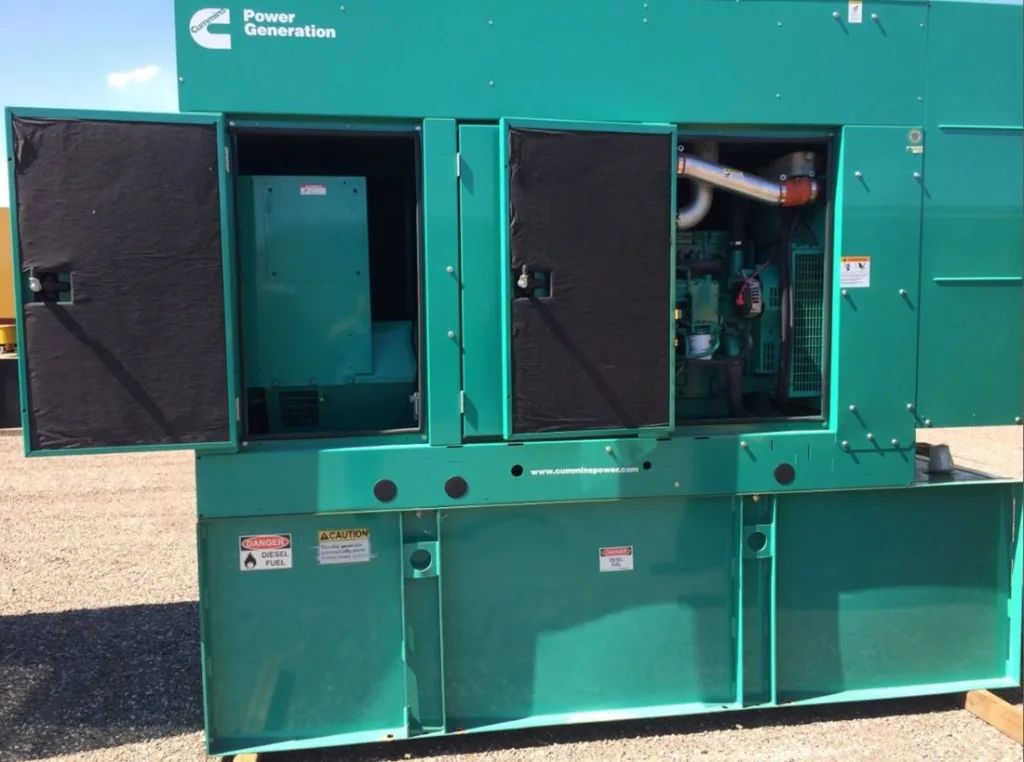Sound Attenuated Generator Enclosure Levels Explained
Noise Requirements for Backup Generators
Many industries depend on backup power, often in urban or residential settings. Both State, Local, and Occupational Safety and Health Administration (OSHA) sound guidelines apply when selecting a generator set. Sound levels are generally measured at the property line, with permissible levels ranging from 45 to 72 dB(A), depending on the area.
Understanding Noise
Sound is produced by vibrating objects that create pressure waves in the air. Excessive sound levels can be painful, uncomfortable, or annoying. The decibel (dB) scale measures sound levels, and there are two key scales:
- dB(L): A linear scale treating all frequencies equally. It doesn’t account for human ear sensitivity.
- dB(A): A weighted scale adopted by OSHA in 1972, accurately reflecting human ear perception.
| Sound Level (dB[A]) | Perception |
|---|---|
| 80-100 | Very loud |
| 100-125 | Uncomfortable |
| 140 | Threshold of pain |
For more details on sound attenuation basics, refer to our additional article.
Measuring Sound
To determine noise levels, microphones are placed approximately 23 feet from enclosures at 45° angles. Measurements include ambient noise (without the generator running) and operating noise at full load across eight octave bands. The sum of these measurements determines total noise.
Techniques to Reduce Generator Noise
Manufacturers employ several strategies to minimize noise:
- Acoustic Barrier: Steel enclosures with sealed auxiliary entries.
- Acoustic Insulation: Sound-absorbing materials inside panels.
- Isolation Mounts: Reduce vibration transmission.
- Cooling Air Attenuation: Baffles in air intake louvers.
- Exhaust: Mufflers tailored to meet noise regulations.
- Location: Position enclosures away from property lines.
Cummins Sound-Attenuated Enclosures

Cummins offers three levels of sound-attenuated enclosures:
- Level I: Operates at 70-89 dB(A)
- Level II: Operates at 63-78 dB(A)
- Level III: Operates at 68-70 dB(A)
Common Features:
- Low-profile design with easy access.
- Engine, generator, muffler, and controls housed in a steel enclosure.
- UL220-listed with stainless steel hardware.
Upgrade Options:
- Wind resistance up to 150 mph.
- Kits to enhance sound attenuation.
- Exterior oil/coolant drains.
- Overhead lifting brackets.
For more details, view the Cummins informational PDF.
Caterpillar Weather-Protective and Sound-Attenuated Enclosures
Caterpillar’s offerings include:
- Weather Proof Industrial: Operates at 84-98 dB(A)
- Level I: Operates at 78-95 dB(A)
- Level III: Operates at 78-91 dB(A)
Common Features:
- Single-side access with removable panels.
- Stainless steel latches and zinc-coated fasteners.
- 16-gauge steel construction.
Upgrade Options:
- Wind resistance up to 120 mph.
- Seismic certifications.
- Overhead lifting brackets.
For more details, visit Cat-ElectricPower.com.
Kohler Weather and Sound Enclosures
Kohler provides:
- Steel Weather Enclosure: Operates at 71 dB(A) @ 23’
- Steel Sound Enclosure: Operates at 70 dB(A) @ 23’
- Aluminum Sound Enclosure: Lightweight, operates at 70 dB(A) @ 23’
Features:
- Skid-mounted construction with power armor finish.
- UL94 HF1-classified acoustic insulation.
- Optional aluminum construction for humid regions.
For more information, refer to Kohler Power Systems resources.